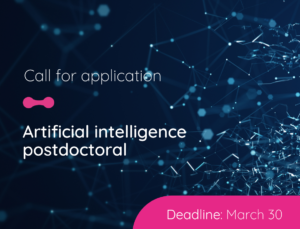The initiative, which is also supported by organizations such as the OAS and the Development Bank of Latin America (CAF), will be led by the National Artificial Intelligence Center, an entity financed by ANID.
The index will be introduced in 2023 and its objective is to understand the state of the art in the region and provide information adjusted to the local context to drive public policies, regulations and promotion of high-impact initiatives for the population in the region.
Rodrigo Durán, Cenia’s Outreach Director, explained that the absence of indicators and metrics to evaluate the performance and capacity of the countries prevents from taking advantage of the potential of the AI revolution.

Cenia, an entity supported by the National Agency for Research and Development, ANID, is working on the development of the first Latin American index to measure the progress of this technology, crucial for the fourth industrial revolution, in twelve countries in the region. The project is supported by multilateral organizations such as UNESCO, the Organization of American States (OAS), the Development Bank of Latin America (CAF), and leading multinational companies.
The report, which will address more than a hundred parameters in dimensions such as training, business, research, investment and people’s perception, is expected to be published in mid-2023. Its goal is to provide local evidence to assess the challenges and opportunities of Artificial Intelligence in the nations of the continent, which is so far non-existent.
Rodrigo Durán Rojas, Cenia’s Outreach Director, said that, at present, the discussion on the development of AI in Latin America is marked by issues emerging from the northern hemisphere, and they have a poor connection with what is happening in reality. “We believe that we have to face the challenge of AI from a regional focus, through collaboration as well as promotion and regulation. This project aims to offer a public good to decision makers, academics, the private sector and different actors somehow related to this technological evolution.”
Cenia states that one of the main issues arising from the discussion of the National AI Policy is the absence of indicators and metrics to evaluate the process. Durán pointed out that the Index represents a new step in the continuity of the actions promoted by the Chilean government to boost the local ecosystem of the discipline. Thus, the report – which also involves the collaboration of a technical counterpart in each country – aims to close the gap and build the first reference framework on the subject. For its materialization, four international reports were defined as a reference that evaluate the progress of AI mainly from the perspective of developed countries.
The National Center for Artificial Intelligence is an organization supported by ANID that was born with the mission of making Chile the main Latin American reference in AI, contributing through technological progress to improve the quality of life of society and citizens, also understanding that it emerges today as a key technology for the development of nations.
Over one hundred parameters
The study, called the Latin American Artificial Intelligence Index, will release its first version in 2023. Currently, the Cenia team and its counterparts in the twelve countries are working on the collection of information from official or validated open sources. In total, the report will gather data for a matrix of one hundred indicators that are grouped in three dimensions.
“Latin America has a lack of indicators in many fields and AI is no exception. We have to collect data manually, that means asking certain players, and that is why it is important to have focal points and the international alliances that we have built. It allows us to have reliable data in what we are going to publish,” explained Durán.
The purpose is to develop an index that considers the cultural and lateral context of Latin America, measuring and comparing performance by country; making visible the state of the art and practice, facilitating the monitoring of indicators; and measuring public perception. The paper, to be presented at a multilateral event in June 2023, will address findings in three dimensions: enabling factors (the maturity of the elements necessary for the development of a robust AI system in the country), development and adoption (state of the research, development and innovation and transfer ecosystem) and governance (institutional environment).
Cenia’s Outreach Director said that “first, we are interested in transmitting to decision-makers the importance of making an effort in the access to data, and second, to offer conclusions that face the challenges of the material and cultural conditions of Latin America.”
The technical references for the framework come from four international indexes: two from the UK (Oxford Insights and Tortoise) and two from the US (Stanford University’s HAI and IBM’s). These documents provide a review of aspects such as the capacity of OECD governments to exploit the innovative potential of AI or to assess the adoption of the technology at a global level.
A disconnected discussion
According to the United Nations, the entity that in late 2021 led the first global agreement on ethics of artificial intelligence (signed by the 193 member states of Unesco), considers this technological field as a decisive tool to accelerate the progress of the Sustainable Development Goals (SDGs).
However, most of the reflections or analyses on public policies in this area are based on the level of adoption that developed countries have today, according to Rodrigo Durán, from Cenia. “All the data we have is thought of in the global north and the south is not being considered in the AI discussion.”
An emblematic reference in this anomaly is the debate regarding facial recognition. According to the Chilean specialist, the conversation in Latin America about AI is marked by this type of evolution, even though we are far from even having the hardware conditions to adopt similar solutions. Cenia’s representative describes that, due to the level of technology development in the continent, a more pertinent discussion would be to address gaps related to public access, connectivity or language models specific to local cultures, issues that “are not in the public discussion today.”
“And they are not there because we take a framework of discussion from the global north, which is where the most entertaining things happen, but we are neglecting the local reality. The case of facial recognition makes it clear that we need a framework of conversation that is culturally, economically and socially relevant to the reality of Latin America.”
According to the World Bank, less than 50% of the Latin American and Caribbean population currently has fixed broadband connectivity and only 9.9% has high quality fiber at home. While 87% of the population lives within range of a 4G signal, actual usage and penetration remains low (37%). In contrast, 20 million people do not have access to electricity supply.
Rodrigo Durán Rojas stressed that “electricity supply is not guaranteed in some Latin American countries. This means that it is not possible to have sovereign computational capacity to train artificial intelligence models or, directly, it is not possible to have a computer plugged in training a small-scale model. On the other hand, in digital connectivity, peripheral areas of some capitals have an unstable Internet connection.”
In other parameters in Latin America and the Caribbean, the best positioned country in terms of download speed is Chile, which ranks 27th in the global ranking, with an average of 89.18 megabytes per second (Mbps). It is followed by Uruguay, in 42nd position with 59.29 Mbps, and Brazil, three places below with 53.89 Mbps.
According to the World Economic Forum, an organization that estimates that global spending on Artificial Intelligence in several countries will reach 52 billion dollars in the next 30 years, the countries with the greatest progress in 4.0 technologies are the United Kingdom, the United States, China, Japan and Israel.
By: Luis Francisco Sandoval. Agencia Inés Llambías Comunicaciones.







